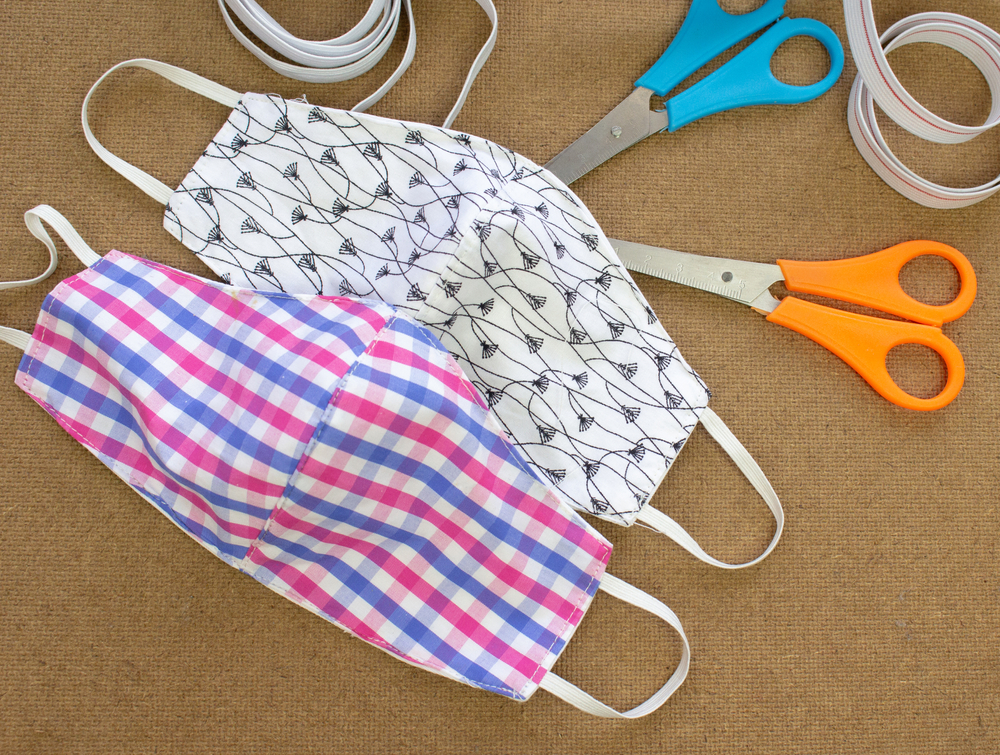|
Pygott & Crone Newsletter: Latest Property Market Updates
In this months edition of the Pygott & Crone newsletter, we take a look at the surge in homeowners keen to move this year following a shift in buyers' and sellers' attitudes following the initial lockdown in March 2020.
Thinking about putting your property on the market in 2021? We've put a guide together to help you understand your property's value. Further into our newsletter we take a look back on 2020 at the highs and lows in a year where everything changed.
Finally, we update tenants and landlords on the 'how to rent guide' following additions and changes made the government.
We hope you enjoy this months edition! If you have any property queries please do not hesitate to contact us.
Multiple gold awards won at the annual negotiator awards
We are delighted to announce that a very successful year for us has been recognised at the annual Negotiator Awards, the property event of the year. We were shortlisted in four categories and are delighted to have achieved three gold awards.
Click here to read Multiple gold awards won at the annual negotiator awards .
Aladdin
From now until Sunday 19 January
Performances at the Riverhead Theatre
Click here to read Aladdin.
Toy Collectors Fair
Sunday 26 January
Family friendly jam packed Toy collectors fair at the Epic Centre
Click here to read Toy Collectors Fair.
Dog Friendly Day
Saturday 8 February
Unlock 1,000 years of history with your furry companion at Lincoln Castle
Click here to read Dog Friendly Day.
Preparing your property for sale
With demand for property prior to lockdown soaring, there are sure to be plenty of motivated buyers waiting now that the property market restrictions are relaxed, therefore now is an ideal time to prepare your property for a quick sale.
Kerb appeal
As is always the case with selling properties, a first impression can make or break a sale with a poorly presented property often putting off buyers before they have even set foot in the home. In the summer this is especially important as buyers will often drive or walk past a property before they decide to book a viewing. With the summer sun shining a light on any less-than-perfect parts of the exterior of your property, you should ensure that flowers are planted, weeds are pruned and lawns are mowed. Extra attention to details, such as ensuring that the front door has been cleaned and the windows are streak-free will pay dividends in your selling process.
Accessories
A neutral interior will appeal to a mass market and increase the scope of your property in terms of potential buyers, but if you are looking to make the most of the summer then don’t be afraid of colour. Using accessories to add pops of colour around your home that reflect the brighter summer season – such as burnt orange and lemon – will make your property stand out from the crowd in those all-important photographs.
Lights
When we think of summer, we all first think of sunshine and brighter evenings – so make the most of this light when presenting your home for sale. Get rid of heavy curtains and dark blinds, which can make a room feel smaller and prevent the light from entering a room. Buyers want to feel that rooms are bright and spacious, so if at all possible have windows and doors open throughout the house to create a light, airy feeling (as well as bringing in those fresh summer scents).
Set dress
Set dressing refers to the arranging of a room or space in order to paint a picture of the kind of lifestyle which could be enjoyed in your property. Never is it more important to set dress your garden than throughout the summer months, with potential buyers wanting to know that they will be able to enjoy the outdoor space which your home provides. Tempt potential buyers by showing off your outdoor spaces with garden furniture, fire pits and barbecues.
Viewing times
During the summer months many people like to start work early and leave early in order to benefit from the longer evenings; make sure that you can accommodate as many viewings as possible by being flexible with your viewing times. Allowing people to view your home early in the morning, as well as in the afternoon will help bring more people through the door as well as showing off your property in favourable lighting.
How to make your own face mask
As the country enters the next stage of its strategy to ease the lockdown restrictions whilst preventing the spread of Coronavirus, the Government has issued new advice to the public on how to stay safe whilst in public spaces (such as shops and public transport). The Government has asked people to wear face masks to cover their nose and mouth where social distancing is not possible. This advice has been detailed in the Government Covid-19 recovery strategy, detailing its plans for lifting the UK out of lockdown; which can be viewed here.
To prevent any additional pressure to the NHS in obtaining crucial PPE supplies, the Government has issued instructions on how to make your own face mask at home, by simply using elastic bands and some cotton fabric or even just an old T-shirt. Your face mask should be worn so that you can breathe comfortably whilst covering your nose and mouth. You should sanitise or wash your hands before putting it on and taking it off, and you should wash your face mask regularly.
We share how to make your own face mask at home below*:
Making a face mask using an old T Shirt
You will need
• One old T-shirt that you no longer want
• Scissors
Method
Step 1: Cut a straight line across the width of the T-shirt (front and back) approximately 20cm from the bottom of the T-shirt.
Step 2: From a point 2cm below the top right-hand corner of the fabric, make a 15cm horizontal cut through both sides of the fabric that is parallel to the top of the rectangle.
Step 3: Cut down towards the bottom of the fabric until you reach approximately 2cm above the bottom edge. From here, make another 15cm cut that runs parallel to the bottom of the fabric to make a rectangle that can be discarded.
Step 4: To make the ties, cut open the edge of the 2 long strips of fabric. Unfold the main piece of fabric and place over the mouth and the nose. The 4 strips act as ties to hold the cloth face covering in place and should be tied behind the head and around the neck.
Making a face mask using a piece of cotton fabric
You will need
• two 25cm x 25cm squares of cotton fabric
• two 20cm pieces of elastic (or string or cloth strips)
• needle and thread
• scissors
Method
Step 1: Cut out two 25cm x 25cm squares of cotton fabric. Stack the 2 squares on top of each other.
Step 2: Fold over one side by 0.75cm and hem, then repeat on the opposite side. Make 2 channels by folding the double layer of fabric over 1.5cm along each side and stitching this down.
Step 3: Run a 20cm length of elastic (or string or cloth strip) through the wider hem on each side of the face covering. These will be the ear loops. Use a large needle to thread it through. Tie the ends tightly.
If you only have string, you can make the ties longer and tie the covering behind your head.
Step 4: Gently pull on the elastic so that the knots are tucked inside the hem. Gather the sides of the covering on the elastic and adjust so the covering fits your face. Then securely stitch the elastic in place to keep it from slipping. These elastic loops fit over the ears.*Our step by step guides have been taken from the Gov.uk website here
How to make your own face mask

As the country enters the next stage of its strategy to ease the lockdown restrictions whilst preventing the spread of Coronavirus, the Government has issued new advice to the public on how to stay safe whilst in public spaces (such as shops and pubic transport). The Government has asked people to wear face masks to cover their nose and mouth where social distancing is not possible. This advice has been detailed in the Government Covid-19 recovery strategy, detailing its plans for lifting the UK out of lockdown; which can be viewed here.
To prevent any additional pressure to the NHS in obtaining crucial PPE supplies, the Government has issued instructions on how to make your own face mask at home, by simply using elastic bands and some cotton fabric or even just an old T-shirt. Your face mask should be worn so that you can breathe comfortably whilst covering your nose and mouth. You should sanitise or wash your hands before putting it on and taking it off, and you should wash your face mask regularly.
We share how to make your own face mask at home below:
Making a face mask using an old T-shirt
You will need
- One old T-shirt that you no longer want
- Scissors
Method
Step 1: Cut a straight line across the width of the T-shirt (front and back) approximately 20cm from the bottom of the T-shirt.
Step 2: From a point 2cm below the top right-hand corner of the fabric, make a 15cm horizontal cut through both sides of the fabric that is parallel to the top of the rectangle.
Step 3: Cut down towards the bottom of the fabric until you reach approximately 2cm above the bottom edge. From here, make another 15cm cut that runs parallel to the bottom of the fabric to make a rectangle that can be discarded.
Step 4: To make the ties, cut open the edge of the 2 long strips of fabric. Unfold the main piece of fabric and place over the mouth and the nose. The 4 strips act as ties to hold the cloth face covering in place and should be tied behind the head and around the neck.
Making a face mask using a piece of cotton fabric
You will need
• two 25cm x 25cm squares of cotton fabric• two 20cm pieces of elastic (or string or cloth strips)• needle and thread• scissors
Method
Step 1: Cut out two 25cm x 25cm squares of cotton fabric. Stack the 2 squares on top of each other.
Step 2: Fold over one side by 0.75cm and hem, then repeat on the opposite side. Make 2 channels by folding the double layer of fabric over 1.5cm along each side and stitching this down.
Step 3: Run a 20cm length of elastic (or string or cloth strip) through the wider hem on each side of the face covering. These will be the ear loops. Use a large needle to thread it through. Tie the ends tightly.
If you only have string, you can make the ties longer and tie the covering behind your head.
Step 4: Gently pull on the elastic so that the knots are tucked inside the hem. Gather the sides of the covering on the elastic and adjust so the covering fits your face. Then securely stitch the elastic in place to keep it from slipping. These elastic loops fit over the ears.*Our step by step guides have been taken from the Gov.uk website here
Are you asking these key questions when you buy or sell?

A recent study has revealed the 'most dreaded' and unusual questions buyers have asked about a property before putting in an offer.
With a small minority asking whether the pets come included in the sale, it’s fair to say that not all of the responses are winners.
However, the report by Hillarys has shed light on just how many Brits lack proper preparation during the home buying process.
Up to two-thirds will not plan their questions ahead of a house viewing, meaning they are not getting the full value out of the experience, as well as potentially wasting an opportunity to find out all of the property’s pros and cons earlier on.
The most dreaded questions from buyers:
Has it dropped in value? 54%What local plans could affect us? 42%What’s the lowest price we could get it for? 33%Is the seller in a chain? 21% To help you make the most of your viewings the next time you decide to buy or sell, we thought we'd share practical suggestions for you to consider. What are some of the more serious questions you should be asking?Whether you're instructing an agent or viewing a property, how prepared you are will determine how quickly you're able to move.Are you asking these key questions:1. Exactly what is included in the sale? Whilst it's safe to assume most sellers will want to keep their pets, it's important to outline what content might be included, such as fixtures, fittings and garden furniture.2. How long has it been on the market and how many offers have they received so far?3. When are the sellers looking to move out? Knowing whether they've already found another home or they're still in the midst of looking will help you to determine how long the process may take and how much room for uncertainty there is.4. Have there been recent renovations or any difficulties with boilers, drains and guttering?5. How did the agent decide on an asking price? Good agents will be able to provide justifications for the value of a property, so you'll know whether it's listed at the right amount or if it's overpriced. What to ask when selling:1. How will you market my property? Are they regularly contacting a database of suitable applicants to give you greater market exposure, or does their strategy start and end with a basic Rightmove listing?2. What are your success metrics and how do they compare to other agents? In other words, what's their experience selling a home like yours at a price like yours?3. How much will you charge? Choosing the agent who offers the lowest fees won't guarantee you reach asking price and you may lose time and money on the market, be savvy when you instruct representation for your property investments.4. What are the contract terms? Before beginning any contractual relationship, know exactly what it is you should expect from them.If you're thinking of selling and want to find out the value of your home, contact us.
Market your house correctly for a speedy, seasonal sale

The property market has continued to experience remarkable levels of activity.
In the first week of August, properties at SSTC (Sold Subject to Contract) were almost at double their number compared to figures from the same period in 2019. This indicates a significant release of pent-up demand due to lockdown.
If you, like a lot of homeowners right now, are considering putting your property on the market, here are some of the ways to market your house well to potential buyers.
Make sure your property images are professional
In order to get viewings, you need to reel them in with your property advert.
Make sure your photos are clear and focused. If it is a cloudy day, see if you can rearrange the shoot. There is nothing nicer than a clear blue sky!
Increase your kerb appeal
It takes just seven seconds for somebody to make their first impression of your property, so make sure your property’s exterior is the best it can be. You want them to walk down the drive feeling impressed and excited to go inside.
Some easy ways to do this is to give your front door or fencing a fresh lick of paint, put up some hanging baskets to add colour, pull out any weeds, move the bins out of sight and make sure the lawn is mowed.
De-clutter
The hallway is famous for housing plenty of clutter: shoes, coats, handbags. Make sure everything that can be put away is tucked out of sight to make it appear more spacious.
As some hallways can be dark and narrow, adding a mirror to a wall can give the illusion of space and can also brighten it up.
A kitchen is a big selling point, so make sure all desktops are wiped down and free of clutter.
Give your viewers space
Let your viewers freely wander around your home with the agent.
This will make them feel much more comfortable asking questions and it also means they might take their time in each room.
Be ready to answer any questions after the viewing. Also be sure to leave hand sanitiser dotted around your property, so not only you but also your viewers will feel comfortable.
Make the most of outdoor space
Since lockdown, we have noticed a real shift in property priorities.
Everybody is putting outdoor space at the top of their agendas, so make sure your garden is well showcased.
If this is an impromptu house viewing, you might not have time to lay a new flower bed, but make sure the lawn is freshly mown, trees and shrubs are cut back to create more space, weeds are removed, and outside furniture is laid out nicely.
Surge in homeowners keen to move this year

COVID-19 has caused a major shift within the property market regarding buyers’ and sellers’ attitudes. According to a recent survey of 1,000 homeowners, as many as 26% are considering moving within the next year.*
So, what are the reasons for homeowners wanting to move?
After a year of restrictions and confinement, we've all had more time to reflect on the way we live and use our homes. Considering that 55% of respondents directly linked their reason for moving to COVID-19, we can see just how extensive the situation is, with many households finding that their property no longer fits their lifestyle or needs.
As well as desiring a bigger garden space, other important factors include finding somewhere with:
Natural light (15.8%): introducing natural light into your home reduces stress and anxiety, boosts immune systems and increases happiness through the production of serotonin – the feel-good hormone. Whilst these are just some of the core benefits, they are the most relative as to why homeowners are seeking homes with plenty of natural light.
A home office (13%): working from home has given many of us the opportunity to see remote working as a long-term norm. By working at home, families are able to share the responsibility of childcare and spend more time together that would have otherwise been spent separate.
A home gym (11.9%): the initial lockdown caused a rift in the country's health and wellbeing, pushing many to implement home workout measures in order to stay fit, active and fulfilled.
The reality is that a lot of people won’t feel comfortable returning to their regular routines for some time, minimising possibly high risk locations such as gyms for a safer alternative, choosing to exercise from home instead.
Chief Executive of IDSystems concluded that: “2020 has been a year of frustration and uncertainty for homeowners, with many now feeling the need to make big changes, either by moving out of the city or maximising their existing spaces.
Through the challenges and restrictions people have faced, it is clear that British homeowners are not afraid to make big decisions to ensure their homes are providing the best possible environment for work, study and relaxation.”
If you're feeling fed up and in need of a change, we'd invite you to browse our range of stunning local properties. Contact us today for more information.
*ID Systems
Your guide to understanding your property's value
2020: A year where everything changed
The updated 'how to rent' guide for tenants and landlords
Your guide to understanding your property's value

If you are planning to sell or rent your property, then it’s important to get an accurate estimate of how much the property could be worth. To give you an agent's perspective of what that involves, we've provided some of the key take-away points below. Market value Firstly, knowing how much your property is worth is more commonly known as its 'market value', which relates to the price a buyer is willing to pay when considering local and national market conditions. What impacts the value of your property? The value of your house can be determined by a variety of factors, such as any recent changes to the property or your neighbourhood. Some of these factors may also include the size, location, amenities, condition and the asking price of similar houses nearby, so it's always beneficial to talk to a local agent with familiarity selling in your area. The difference between market value and asking price Valuing your house accurately is one of the most important parts of the process. Bringing your home onto the market with an asking price that is too low could mean you receive offers below market value. Whereas if the asking price is too high, you may not receive any offers at all, causing time delays and market stagnation as the ideal buyers are put off a home that falls outside of their price bracket. So, whilst it can be tempting to instruct an agent based on who is offering the highest value, the risk of this is that you may need to gradually reduce your price anyway to reflect the property's actual market value. How much could your house really be worth? The best way to see how much your house is worth is through a combination of tried-and-tested methods. Over lockdown, it would be advisable to begin by referring to online house price calculators and valuation tools, as these will provide a guide based on Land Registry Data. However, it's important to bear in mind that for the most accurate and up-to-date valuation, you should organise time with an agent, as an in-person appraisal will guarantee any recent developments to your home are taken into consideration. If you’re thinking about putting your property on the market, book a valuation with our team today. Surge in homeowners keen to move this year2020: A year where everything changedThe updated 'how to rent' guide for tenants and landlords
2020: A year where everything changed
 As we all make preparations for the year ahead, we've brought you a month-by-month recap of 2020's property market highs and lows. January – this time last year, we started with an incredible boost to market activity, with the 'Boris bounce' leading to more new listings and sales being agreed following a period of political uncertainty and concern over Brexit in 2019. February – by the second month, news of the pandemic made its way across Europe; even though very few of us could have predicted just how much of an impact it would have at this stage! Meanwhile, the largest ever private real estate transaction took place, with IQ student accommodation being sold for £4.7bn. March – with the pandemic set to massively impact companies, the government froze business rates for retail, leisure and hospitality tenants. However, the inevitable happened towards the end of the month, as the entirety of the UK were plunged into a complete lockdown. April – the property market came to a standstill as the sector was forced to close for the foreseeable future. Firms across the country tried to battle the pandemic’s financial effect using the furlough schemes and support available. As a country, we also started embracing the benefits of remote working, developing new skills and spending time on DIY projects around the house. May – in May, the property market could finally return to some degree of normality. This involved the sector reopening, including the resumption of sales and lettings activity to get the country safely moving again. June – unfortunately, June saw the massive real estate company – Intu – enter into administration, putting many of the UK’s shopping centres at risk. We also saw the alert level downgrade from four to three, after a steady decrease in cases. For the property market, we saw a steady and healthy return of pre-pandemic activity; especially for the lettings market with a rental bounce. July – a stamp duty holiday was announced, which would cut the rate to 0% for all properties under £500k until March 2021. The Government also launched a new drive that promised the biggest planning overhaul in decades, including a revamp to permitted development rights. We also saw an extraordinary fundraising effort for the NHS, with 100-year-old Captain Tom Moore raising over £33m, as well as receiving a knighthood from the Queen. August – prime property showed a remarkable recovery, as it reports the biggest rise in deals compared to other areas since the end of the lockdown. The eat-out-to-help-out scheme went live, providing the hospitality sector with a much-needed boost. September – as the number of cases rapidly rose, the UK was warned that a second wave of the virus had arrived. As a result of this, the Government imposed new restrictions on the nation. Many were concerned that this would hamper property market recovery, which turned out not to be the case, as sales agreed and tenant enquiries went from strength-to-strength. October – demand continued to rise, spurred on by the possibility of stamp duty savings. Towards the end of October, Boris Johnson announced that England would be placed in another lockdown. Thankfully, the property market would continue to operate throughout this period, so as to avoid the impact the first lockdown had on the sector. November – the market remained resilient despite the second lockdown, with house prices increasing by 5.8%. We also saw mortgage approvals reach new record-breaking heights, according to Rightmove, with similar figures seen in 2007. At the end of the month, it was announced that regions in England would be placed in different tiers based on case totals. December – the last month of 2020 started with great news, with a COVID-19 vaccine being rolled out to those who were most vulnerable first. This news boosted the whole of the economy, including the property market, allowing people to finally start seeing life as back to normal in the future. If you have any questions, or you are looking to buy or sell in 2021, get in touch with our team. Surge in homeowners keen to move this yearYour guide to understanding your property's valueThe updated 'how to rent' guide for tenants and landlords
The updated 'how to rent' guide for tenants and landlords
 As a landlord, there are a number of legal requirements to be complied with prior to letting out a property. One of these is to provide a copy of the Government issued 'How to Rent' checklist to all tenants when entering into and renewing an assured shorthold tenancy, which is the most common type of contractual letting agreement. The Government has recently released an updated How to Rent guide, which can be found at: https://assets.publishing.service.gov.uk/government/uploads/system/uploads/ attachment_data/file/942503/6.6642_MHCLG_How_to_Rent_v5.pdf The guide is designed to help tenants understand their rights and responsibilities under an assured shorthold tenancy both before the tenancy starts and during the term of the agreement. What additions or changes have the government made to the guide? There are some noticeable differences with the latest version, which now provides answers to tenants' frequently asked questions, including the level of deposit and its protection, necessary documentation and length of term. Another important addition is the reference to a landlord's obligations regarding mandatory electrical testing, and a review of the permitted fees under the Tenant Fees Act, which was introduced in 2019. The Government's latest guide also sets out the information that must be provided by a landlord to tenants, as well as a summary of what each party must and should do during the tenancy. Importantly, it gives advice to tenants on what to do if things go wrong, whilst clearly setting out what should happen at the end of the tenancy. Why is it so important landlords provide this guide to their tenants? Landlords need to bear in mind that giving tenants the How to Rent guide is a legal requirement. Without doing this, it hinders your ability to later serve a valid Section 21 notice and regain possession of your property, if required to do so. This is due to the fact that the How to Rent guide is one of the statutory pre-conditions for serving a Section 21 notice. We will always ensure on behalf of our landlord clients that their tenants are provided with a copy of this guide and that all other landlord requirements on the grant of an assured shorthold tenancy are complied with. If you want any further information about the How to Rent guide or landlord and tenant requirements on the grant of an assured shorthold tenancy, please call our lettings team who will be happy to help. Surge in homeowners keen to move this year Your guide to understanding your property's value 2020: A year when everything changed
<< News
|
|